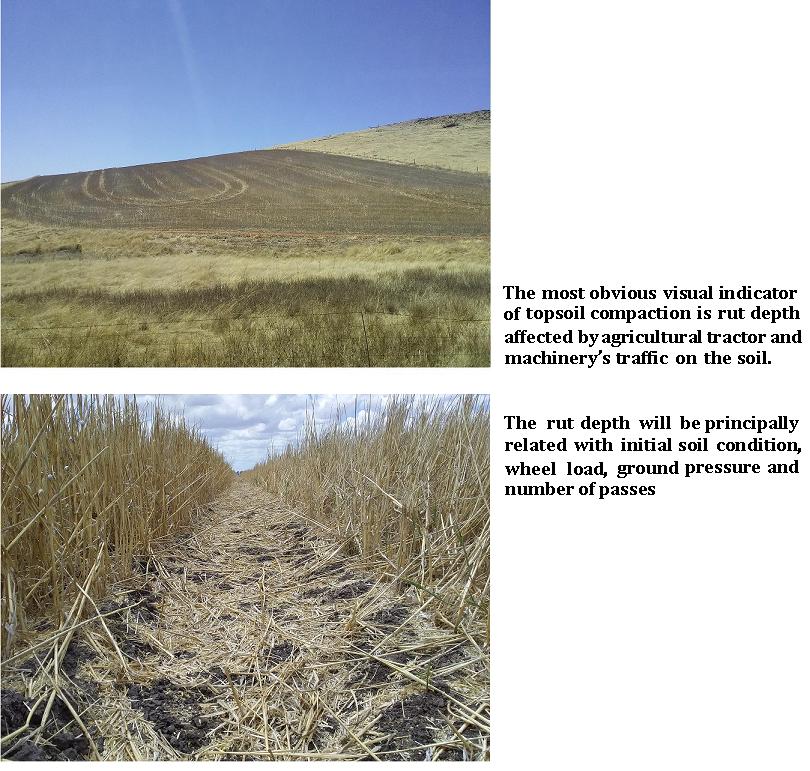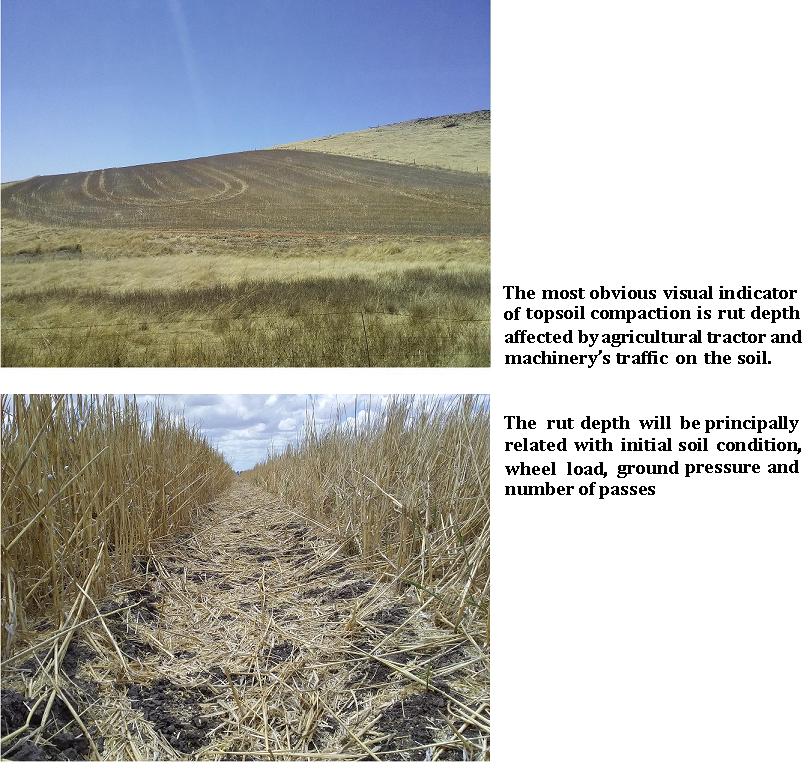Soil compaction response to wheel traffic in the Rolling Pampas region of Argentina
DOI:
https://doi.org/10.48162/rev.39.011Palabras clave:
tyre inflation pressure, cone index, soil compactibilityResumen
The present work shows the effects of the different agricultural wheels traffic on the soil physical properties on a Typic Argiudoll soil worked under no-tillage cropping system. Soil compaction produced by traffic was quantified through these parameters: a) cone index, b) rut depth and c) soil water content at the traffic moment. Grain chaser, sprayer, harvester combine and tractor equipped with commonly used wheels in the study area were tested. The main results obtained showed that the tyres with the highest inflation pressure and tyre ground pressures produced the highest values of cone index and rut depth. Typic Argiudoll soil worked under continuous no-tillage cropping system is not able to constrain topsoil and subsoil compaction when it is wheeled by tyre with ground pressures greater than 77.6 kPa.
Highlights
- Soil compaction causes a reduction in root growth and yield in many crops.
- Soil under a no-tillage system does not limit topsoil and subsoil compaction when wheeled by tyres with ground pressures greater than 77.6 kPa
- When the machinery load increases on soils with high bearing capacity (soils under a long-term no-tillage system), the subsoil compaction problems increase.
Descargas

Descargas
Publicado
Cómo citar
Número
Sección
Licencia
Derechos de autor 2021 Revista de la Facultad de Ciencias Agrarias UNCuyo

Esta obra está bajo una licencia internacional Creative Commons Reconocimiento-NoComercial-CompartirIgual 3.0.
Aquellos autores/as que tengan publicaciones con esta revista, aceptan las Políticas Editoriales.











.jpg)




